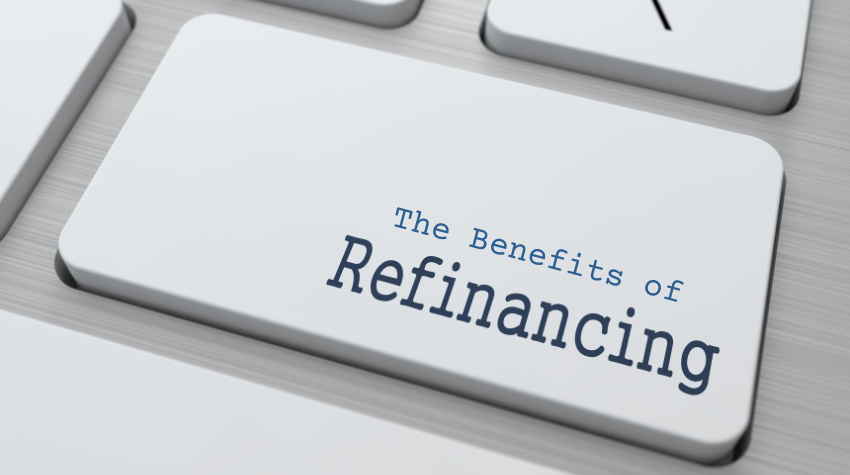
Refinancing is a financial strategy that homeowners in Ontario, like many across Canada, often consider optimizing their mortgage terms, reduce interest rates, or tap into home equity. While the concept may seem straightforward, the decision to refinance involves careful consideration of various factors, including timing, current market conditions, and personal financial goals.
In this article, we will explore what refinancing means, why one might choose to refinance, the pros and cons, and when it might be the right time to do so.
What Does Refinancing Mean?
Refinancing a mortgage involves replacing an existing loan with a new one, typically to secure better terms or lower interest rates. When a homeowner refinances, they essentially pay off their original mortgage and take out a new one. This new mortgage might have a different interest rate, loan term, or amount. In Ontario, refinancing can also involve consolidating debt or accessing the equity built up in a home for other financial needs.
Refinancing is distinct from renewing a mortgage, which typically occurs at the end of a term and often involves continuing with the same lender and similar loan terms. Refinancing, however, allows homeowners to modify the conditions of their mortgage contract at any point, potentially switching lenders if better options are available.
Why Would You Need to Refinance?
There are several reasons why homeowners might consider refinancing their mortgage:
- Lower Interest Rates: One of the most common reasons for refinancing is to take advantage of lower interest rates. If market rates have dropped significantly since the original mortgage was taken out, refinancing could reduce monthly payments, and the total amount of interest paid over the life of the loan.
- Debt Consolidation: Homeowners with high-interest debts, such as credit cards or personal loans, might refinance to consolidate those debts into a single, lower-interest mortgage payment. This can simplify finances and reduce the overall interest burden.
- Accessing Home Equity: Refinancing can provide access to the equity built up in a home. This is often referred to as a cash-out refinance, where the homeowner takes out a new mortgage for more than the amount owed on the existing one and receives the difference in cash. This can be used for home improvements, education expenses, or other significant expenditures.
- Changing Loan Terms: Some homeowners refinance to change the terms of their mortgage. For example, switching from an adjustable-rate mortgage (ARM) to a fixed-rate mortgage can provide stability in monthly payments. Conversely, moving to an ARM might be advantageous if the homeowner expects to sell the property before rates adjust upward.
The Pros & Cons of Refinancing
Refinancing a mortgage can offer several benefits, but it also comes with potential downsides. Understanding both sides is crucial for making an informed decision.
Pros of Refinancing
- Lower Monthly Payments: By securing a lower interest rate or extending the term of the mortgage, homeowners can reduce their monthly payments, freeing up cash flow for other expenses or investments.
- Interest Savings: Refinancing at a lower interest rate can result in significant savings over the life of the mortgage. Even a slight reduction in the interest rate can translate to thousands of dollars in savings.
- Debt Management: Refinancing to consolidate debt can simplify financial management and potentially reduce the interest rate on non-mortgage debts. This can help in faster debt repayment and improved credit scores.
- Access to Funds: A cash-out refinance provides access to home equity without selling the property. This can be a cost-effective way to fund major expenses or investments, given the typically lower interest rates on mortgage loans compared to personal loans or credit cards.
- Flexible Terms: Refinancing allows homeowners to adjust their mortgage terms to better fit their current financial situation or future plans. This might mean moving from a variable to a fixed rate, shortening the loan term for faster payoff, or lengthening it to reduce monthly payments.
Cons of Refinancing
- Closing Costs: Refinancing often involves substantial closing costs, which can include appraisal fees, legal fees, and other expenses. These costs can offset the financial benefits of a lower interest rate, particularly if the homeowner plans to move soon.
- Resetting the Loan Term: When refinancing, the clock on the mortgage term resets, which could mean paying more in interest over time, even if the monthly payments are lower. This is especially true if moving from a shorter-term mortgage to a longer-term one.
- Interest Rate Fluctuations: If refinancing to an ARM, there is a risk that interest rates could increase over time, leading to higher monthly payments. This unpredictability can be a disadvantage for those who prefer stable, predictable payments.
- Impact on Credit Score: The refinancing process involves a credit check, which can temporarily lower a credit score. Additionally, if refinancing multiple times or too soon, it might be seen as a sign of financial instability.
- Equity Reduction: A cash-out refinance reduces the equity in a home. This could be a disadvantage if property values decrease or if the homeowner plans to sell in the near future, as they may not have as much profit from the sale.
When Is the Right Time to Refinance?
Determining the right time to refinance depends on various factors, including current mortgage rates, the homeowner’s financial situation, and future plans. Here are some key considerations:
- Market Conditions: The most favorable time to refinance is typically when interest rates are lower than the rate on the existing mortgage. A general rule of thumb is that a 1% decrease in interest rate could make refinancing worthwhile, but this varies based on loan size and remaining term.
- Break-Even Point: This is the point at which the savings from refinancing equal the costs of refinancing. It’s crucial to calculate how long it will take to recoup the costs through lower monthly payments. If the homeowner plans to stay in the home longer than the break-even period, refinancing might make sense.
- Credit Score Improvement: If a homeowner’s credit score has improved significantly since the original mortgage was taken out, they might qualify for better rates. Higher credit scores often lead to lower interest rates, making refinancing more beneficial.
- Changes in Financial Situation: Life changes such as a new job, a significant increase in income, or a decrease in debt can make refinancing more advantageous. Conversely, if a homeowner’s financial situation has worsened, it might not be the best time to take on new mortgage terms.
- Home Equity: Homeowners should consider refinancing if they have built up substantial equity. More equity generally translates to better refinancing terms, such as lower interest rates.
- Loan Term Considerations: If nearing the end of a loan term or if the current mortgage is an ARM with a rate about to adjust upward, refinancing to a fixed-rate mortgage could provide stability and potentially lower payments.
Refinancing can be a powerful tool for homeowners to optimize their mortgage terms, reduce debt, and access home equity. However, it is not a one-size-fits-all solution. Understanding the benefits and drawbacks, as well as carefully considering the right timing, is essential for making an informed decision.
By evaluating personal financial goals, market conditions, and the costs involved, homeowners can determine whether refinancing aligns with their long-term financial strategy. As with any significant financial decision, consulting with a mortgage professional can provide tailored advice and help navigate the complexities of refinancing.








